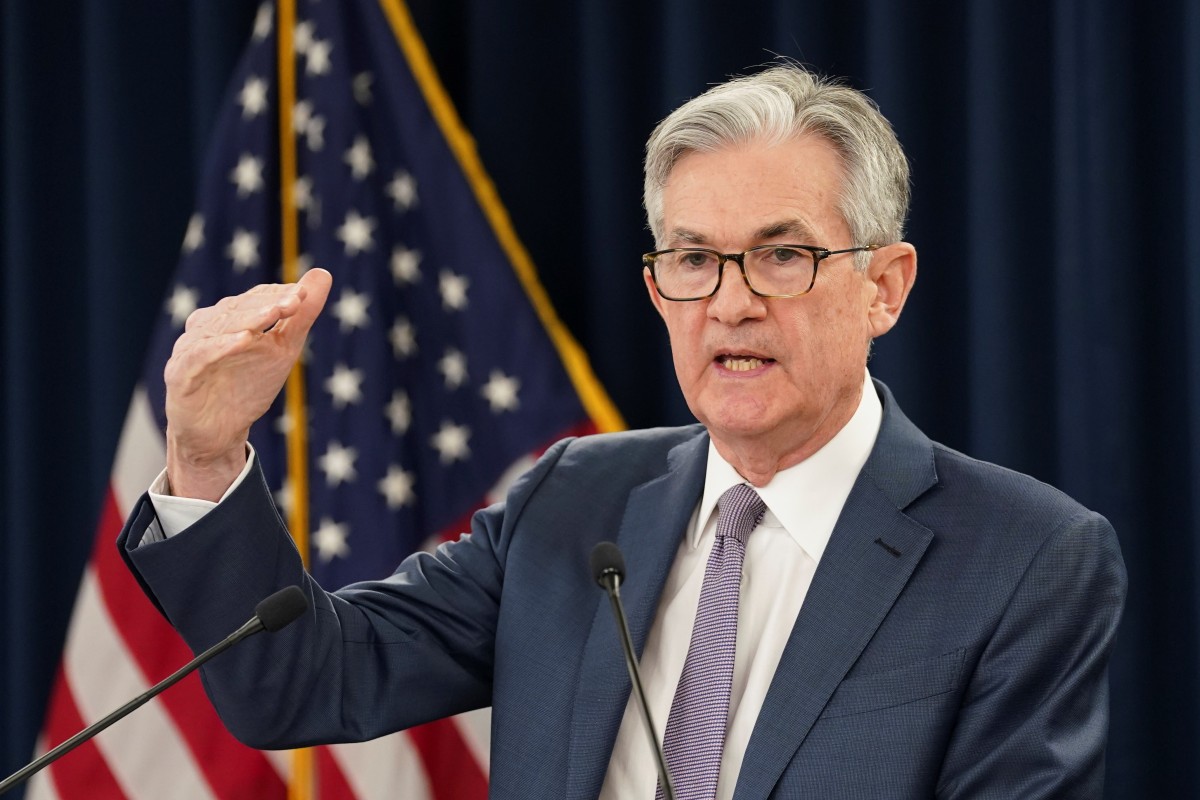
US Federal Reserve Chair Jerome Powell
After Covid-19 lockdowns in March and April, many countries reopened, and people partied to celebrate the end of the pandemic. Now they are being swept by a
of infections, with deadly consequences as far as the eyes can see.
Until an effective vaccine is found, which could be years away, social distancing is likely the new normal. Parts of the global economy, like tourism, will remain shut and others like catering and entertainment must severely reduce their operating capacity. A rebound is unlikely, and the global economy’s capacity might be reduced by 10 to 20 per cent.
The new normal should result in sharply lower profits for surviving companies, as well as widespread bankruptcies (which are probably just being postponed by “helicopter money” from governments). Yet, looking at the financial markets – especially the
– it is hard to tell that the global economy is collapsing, instead of booming.
The multi-year mania continues unchecked by Covid-19;
, it seems, can make himself richer just by tweeting titillating stuff. These days, so many are talking like
while dressing in minimalist garb; yet, none of them have put out a product as successful as the iPhone, not even close.
With high investment and low productivity, the current tech darlings are looking more like tech Kardashians. Tech mania is now fuelled by star power; knowing how to tease is half the battle.
However, the other half of the equation would be the supportive monetary environment. After all, the tech Kardashians need money to keep the lights on. This is where the Federal Reserve comes in; it has explicitly targeted asset prices to hold up the economy.
When the stock market stumbled over the prospect of a global economic slowdown in September last year, the Fed began buying Treasuries to bail out the market. When the market crashed in March this year on fears of the pandemic, the Fed poured
into the market to add liquidity, and started buying corporate bonds.
As US companies have been buying back stocks by , the Fed is effectively buying stocks directly. When a central bank that can print as much money as it wants is willing to buy assets, asset prices then depend entirely on what the central bank does – rather than the underlying fundamentals. All these tech billionaires are really the children of Fed chair Jerome Powell. Alan Greenspan’s dotcom babies were worth merely billions briefly; Powell’s children are worth tens of billions and hanging on and on. Earnings reporting season is coming. The numbers are probably going to be very bad. If the market crashes again, the Fed might buy stocks directly this time.
Expectations that the Fed will do whatever it takes to keep the market up are drawing back speculators time and again. When earnings don’t matter any more, more and more CEOs will do a Musk to keep stock prices up. The tech Kardashians are taking over Wall Street.
Is there such a thing as a free lunch, though? Karma will eventually catch up with the Fed. When China joined the global economy, its size and low wages added to deflationary pressure. The resulting low inflation in the world was really due to this shock, not overly tight monetary policy. Greenspan interpreted low inflation as a call for loose monetary policy, which led to asset bubbles. His successors have maintained the policy.
In the meantime, as global companies arbitraged between China and the West, wages in the West stagnated or declined. Loose monetary policy offered cheap debt to income-strapped workers there. With debt shoring up the living standard, the backlash against globalisation took many years to boil over.
Nowadays it is popular on both the left and right to blame China for the US’ woes. The Fed is even more at fault. It gave the West a painkiller. The Fed’s monetary policy is a financial opioid crisis.
China has been developing for four decades. It should no longer have a deflationary impact. When
, its per capita income was comparable to the US’. However, China’s is only one sixth of the US’. The reason for this is China’s investment-driven model, which tends to lead to overcapacity and increasing pressure to sell more at lower prices.
There is a now global backlash against China’s low prices. While negative stories abound about China and hence, the need to
from it, the low prices are the real reason. It is the gravity that sucks production into China. Even if China doesn’t change this time, a decoupling might finally unleash inflation in the global economy.
What goes around comes around. The Fed has led the world on this crazy bubble ride. When the ride finally screeches to a halt, the consequences will be far-reaching. A decade or more of stagflation awaits the world. Political turmoil and revolution might accompany it.



No comments:
Post a Comment